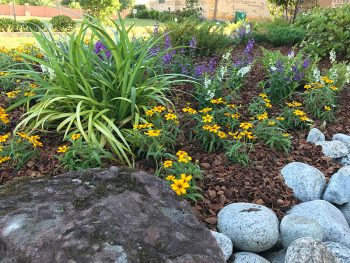 If you have never been into gardening before, you could be unsure where to start. Fortunately, there are a number of steps that you can take to do this successfully.
If you have never been into gardening before, you could be unsure where to start. Fortunately, there are a number of steps that you can take to do this successfully.
Choose The Right Site
When you start your garden, location is just as important as when you buy real estate. You need to put your garden in a part of your yard where you can see it regularly. Out of sight will be out of mind and this is not something that you want. When you choose the right spot, you will be more likely to spend time in the garden.
Follow The Sun
When you are first learning to garden, you can easily misjudge the sunlight. You need to take the time and pay attention to where the sunlight is in your yard before you choose a spot for the garden. Most of the edible plants you want such as herbs, vegetables, and fruits will need at least 6 hours of sunlight to thrive.
Stay Close To The Water
One of the best tips for gardening is to plan your new garden close to a source of water. You need to ensure that you can run your hose to the garden and that you will not have to carry water to the plants each time you need to water them. One of the best ways to tell if your plants need more water is to push your finger into the soil to your first knuckle. If the soil is dry, you will need to water the plants.
Choose the Right Plants
The right plants and flowers will depend on so many variables. A garden that works well for cherry blossoms for instance, may not be ideal for morning glories. You can get the details now on Gardener’s Path if they’re something you wish to grow.
Start With Good Soil
When you start a garden, you need to invest in good soil which is well-drained and rich in nutrients. You can get this blend by putting around 3 inches of all-purpose garden soil into the existing soil. If you are not planting directly into the ground and will use a raised bed, you should use soil made for raised beds. This will have the best texture and weight for these beds.
Consider Containers
If you have limited space, you need to look at containers. It is possible to grow plants such as flowers, herbs, vegetables, shrubs and berries in pots. When you use a container, you need to ensure that it is large enough for the plants and you need to fill it with the right potting mix. Potting mix will be specially formulated to help the plants in pots thrive and it will help you prevent over or under-watering.
The Growing Conditions
When you choose plants, you need to match them with your growing conditions. This means that you need to place plants that love the sun in sunny spots. If you are in a warmer climate, you should choose heat-tolerant plants and give any ground eating vines like melons and pumpkins enough room or a trellis to grow. It is important that you do your homework and choose the plants that will grow and thrive in your space. If you want to get a step up on garden success, you should start with some vigorous young plants instead of growing from seed.
Know Your Zone
When you choose the best plants, you need to know what your hardiness zone is. This will be the coldest place that a plant can grow. The higher the zone number, the warmer the climate will be. This means that a plant which is hardy to zone 4 and you live in zone 5, the plant will survive. However, if you are in zone 3, it will be too cold and the plant will have a hard time thriving.
Learn Frost Dates
When you plant too early or late in the season, it can spell disaster for the garden. To avoid this, you need to know when the last average spring frost will happen for your area. This will stop you from accidentally killing your plants by putting them out too early. You should also know when the first average fall frost comes to know when to move your plants indoors or harvest them before the cold damages them.
Add Mulch
You should apply around 2 to 3 inches of mulch to each plant. This will reduce the weeds coming through and the moisture that is lost. There are many types of mulch that provide you with a polished look. You can also put down shredded leaves, straw, and other locally available materials.
